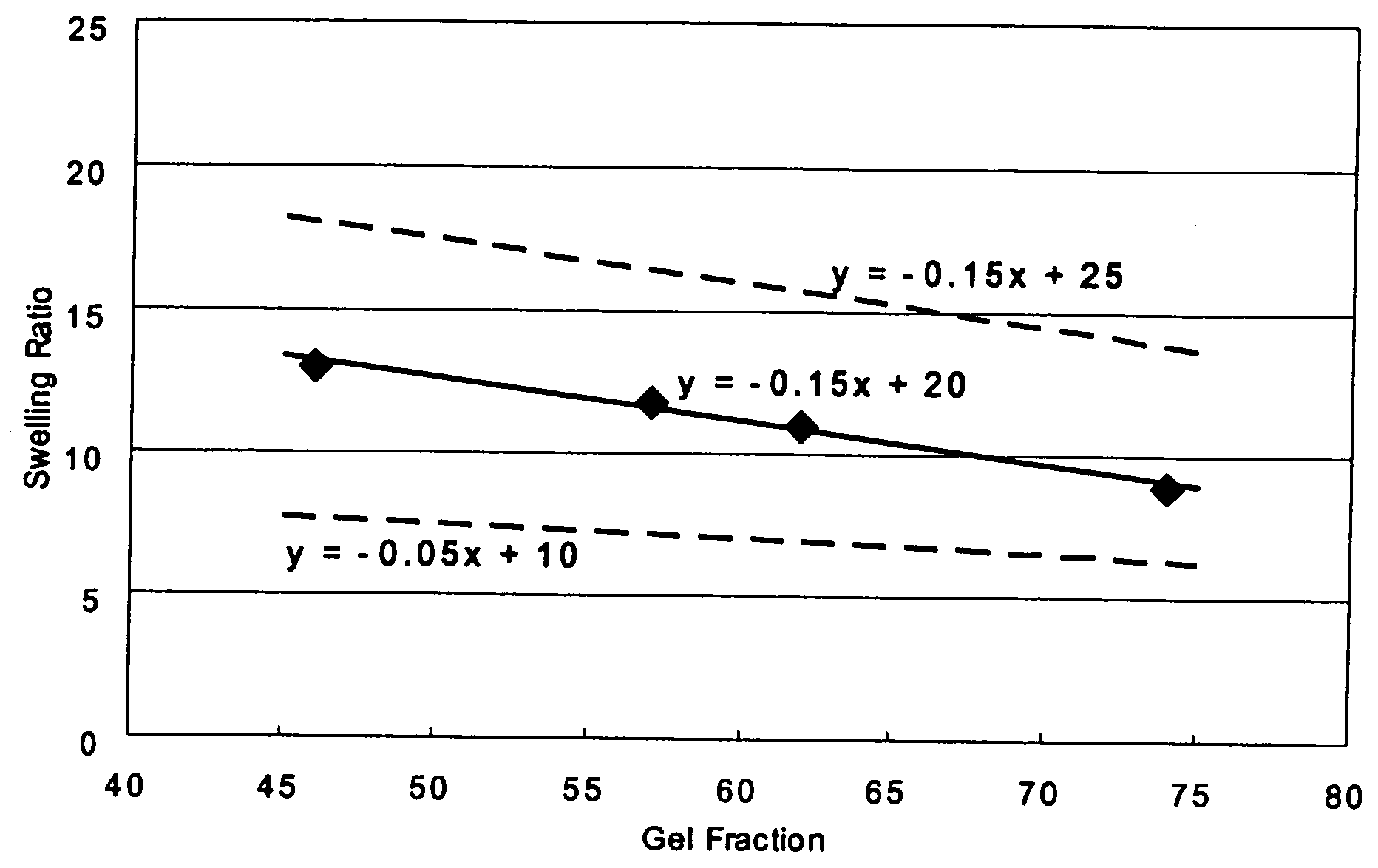Acrylic pressure-sensitive adhesive composition
a technology of pressure-sensitive adhesives and compositions, applied in the direction of adhesive types, transportation and packaging, other chemical processes, etc., can solve the problems of easy loosening of protective films, easy loosening of protecting films, etc., to achieve good surface protection and peeling strength, excellent balance, and low peeling strength
- Summary
- Abstract
- Description
- Claims
- Application Information
AI Technical Summary
Benefits of technology
Problems solved by technology
Method used
Image
Examples
example
Preparation Example 1
[0069]A monomer mixture of 96 parts by weight of 2-ethyl hexylacrylate (EHA), and 4 parts by weight of hydroxybutylacrylate (4-HBA) was put into a 1 L reactor equipped with a cooling system for reflux of nitrogen gas and easy regulation of temperature, and 100 parts by weight of ethyl acetate (EAc) were added thereto as solvent. To remove oxygen therefrom, nitrogen gas was purged for 60 minutes, and the temperature was kept at 62° C. After making the above mixture even, 0.03 part by weight of azobisisobutyronitrile (AIBN) was added thereto as reaction initiator. The mixture was reacted for 8 hours, and was diluted with ethyl acetate (EAc) to obtain acrylic copolymers (A-1) having 47 wt % of solids, 500,000 of weight average molecular weight, and 4.9 of molecular weight distribution.
preparation examples
2˜6
[0070]As shown in Table 1, the acrylic copolymers were prepared by partially adding or partially not adding each component of the composition of Preparation Example 1 in the same manner as Preparation Example 1.
[0071]
TABLE 1Preparation Examples123456A-1A-2A-3B-1B-2B-3Composition2-EHA969894100100100HBA426———AIBN0.030.030.030.030.030.03EAc100100100100100100Content of solid (wt %)474849383647Weight average6048551008030molecular weight (10,000)Molecular weight4.95.55.24.84.54.8distribution2-EHA: 2-ethyl hexyl acrylate4-HBA: 4-hydroxybutylacrylateAIBN: azobisisobutyronitrileEAc: Ethyl acetate
example 1
[Mixing Process]
[0072]To the homogeneous mixture of 50 parts by weight of acrylic copolymer (A-1) prepared in the Preparation Example 1, and 50 parts by weight of acrylic copolymer (B-1) prepared in the Preparation Example 4, 5.0 parts by weight of prepolymer of hexa methylene diisocyanate (HDI) and 1.0 part by weight of glycol ester plasticizer (Rhenosin RC-100, Rhein Chemie, Germany) were added as crosslinking agents. The mixture was diluted properly, homogeneously mixed, coated biaxially stretching polyethylene telephthalate film having 38 micron of thickness on one side, and dried to obtain an even pressure sensitive adhesive layer having 20 micron of thickness.
[Laminating Process]
[0073]A releasing film was laminated on a pressure sensitive adhesive layer which was coated on one side of the above polyethylene telephthalate film, and kept for 4 days under 23° C. and 55% of humidity for sufficient aging. The above protective film has cut into suitable sizes, which were attached on...
PUM
| Property | Measurement | Unit |
|---|---|---|
| molecular weight distribution | aaaaa | aaaaa |
| molecular weight distribution | aaaaa | aaaaa |
| molecular weight distribution | aaaaa | aaaaa |
Abstract
Description
Claims
Application Information
 Login to View More
Login to View More - R&D
- Intellectual Property
- Life Sciences
- Materials
- Tech Scout
- Unparalleled Data Quality
- Higher Quality Content
- 60% Fewer Hallucinations
Browse by: Latest US Patents, China's latest patents, Technical Efficacy Thesaurus, Application Domain, Technology Topic, Popular Technical Reports.
© 2025 PatSnap. All rights reserved.Legal|Privacy policy|Modern Slavery Act Transparency Statement|Sitemap|About US| Contact US: help@patsnap.com



